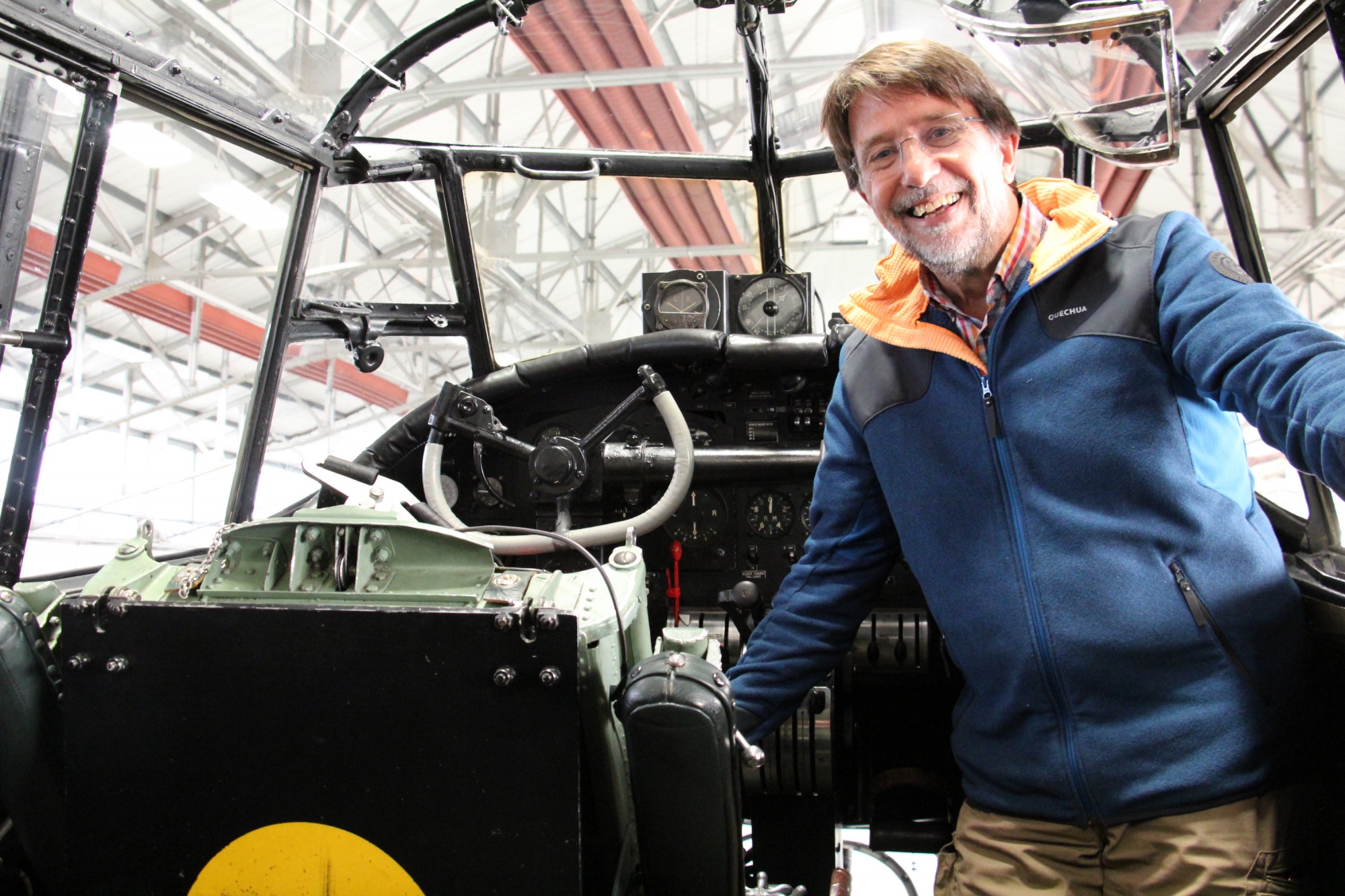BBMF Lancaster internal tour prize winner
Header Image: Club member Kevin Baughan enjoying his prize in the cockpit of BBMF Lancaster PA474 on 28th September 2022. (Photo: Clive Rowley)
The RAF Memorial Flight Official Club ballot prize for May was a ‘money cannot buy it’ opportunity to experience what it is like inside BBMF Lancaster PA474, which is very representative of operational Lancasters, with the exception of having dual controls. The lucky winner of this special experience was Club member Kevin Baughan from Berkshire, who took up his prize at the Flight’s home at RAF Coningsby on 28th September.
Kevin was met by former OC BBMF, retired Squadron Leader Clive Rowley, who first provided a detailed briefing on the Lancaster’s external characteristics, its history and the background story behind its current markings as a 460 Squadron Lancaster with the bagpipe-playing kangaroo nose art. Then Kevin climbed the ladder into the Lancaster at the rear door, to experience the cramped interior of the big bomber. He made his way down to the rear turret and squeezed into it, and then worked his way forward, past the mid-upper turret, onto the bomb bay, clambered over the main wing spars, past the wireless operator and navigator positions and into the cockpit.

Kevin’s close acquaintance with the BBMF Lancaster was particularly special because he had just returned from a six-week holiday in Canada and had visited the only other airworthy Lancaster in the world, the Canadian Warbird Heritage Museum’s FM213 C-GVRA, at Hamilton, Ontario. Most unusually, therefore, he had seen both of the world’s flying Lancasters, 3,500 miles apart, within days of each other.
Kevin’s interest in the BBMF began when he researched the story of his mother’s cousin, Flight Lieutenant Norman Stent, who was killed aged 23. He was the pilot of a Lancaster (ED540) of 100 Squadron on a training sortie during the squadron’s work-up period after it was reformed as a heavy bomber squadron in December 1942. The aircraft crashed at its base at RAF Waltham (often know as RAF Grimsby) on 15th February 1943, after the port outer engine failed and the propeller was feathered on a cross-country training flight. There was a strong and gusty wind blowing and the aircraft bounced on landing. The pilot attempted to go round again but the aircraft was unable to climb, dropped a wing and dived into the ground from 200 feet. The pilot, Norman Stent, and four of his crew were killed; the wireless operator and bomb aimer survived but were injured. In memory of Norman Stent, Kevin touched the brass plaque with the Bomber Command badge engraved on it, which is rivetted to the BBMF Lancaster’s fuselage aft of the door (a tradition followed by the BBMF Lancaster crews when they enter and exit the aircraft).

Kevin said of the experience, “Thank you so much for such a special morning at BBMF. As you know it meant a great deal to me to be able to acknowledge my mother’s cousin, Flight Lieutenant Norman Stent, as one of the many, by tapping the Bomber Command plaque by the Lancaster door. Then to combine this with an insight as to what it would be like to be inside the Lancaster, with such fascinating anecdotes and expert commentary from Clive was truly exceptional. What memories to have and to share with the family, particularly my uncle who is also Norman’s cousin. The BBMF is a wonderful tribute to the “Few” and to the “Many”; inspiring, uplifting, and so educational for everyone. I wish the BBMF the very best for the future and look forward to returning from time to time as the Flight continues to evolve.”







